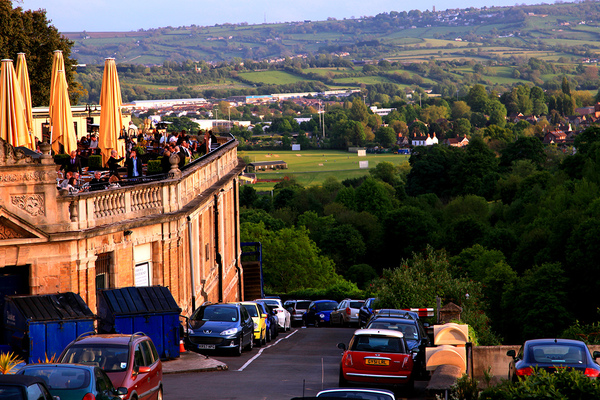Candidate: Clifton
Location: Bristol, UK
Category: The Great Neighbourhood Award
Year: 2006/7
Other Finalists in this category: Clerkenwell, London and Merchant City, Glasgow (winner)
Summary
Clifton is well managed, inclusive, fair and well-run, there is reliance on the energies volunteer groups (Bristol Civic Society, Clifton and Hotwells Improvement Society, Bristol Visual and Environmental Group), but evidence of people working together to a collective vision for the area which began in early 1970s with Conservation Area designation. A policy of careful repair and renewal has been pursued through projects involving the community and the City Council that has enabled the regeneration set-piece architectural groups (eg Royal York Crescent, Paragon etc) and successful conservation of the whole area. The neighbourhood is well maintained with an emphasis on public spaces and green areas.
The public realm is managed by Bristol City Council and local Garden Committees. Management groups have responded sensitively over time to changes in patterns of use, recreational trends, demand for events, entertainments and increased use by the public.
There is a strong local pride in Clifton reflecting its deep community spirit nonetheless; the community has welcomed a significant incoming population including the young, upwardly mobile and a new student population each year. There is a strong tradition of local activism in Clifton that protects the historic distinctiveness of the area from development, and ensures the local character of the village is retained. The historic context is carefully considered in all new development, by discussion and debate between the local amenity societies and the local planning authority. Nevertheless, much new development in the village employs good contemporary design.
The area is highly valued as a place to live in, to work and to relax – to many it is seen as the premier neighbourhood location in Bristol. The community has a wide age range from students to the many elderly residents. The area attracts many visitors, enjoying the village atmosphere, the shops, leisure facilities and fine open spaces. Clifton is a much visited tourist attraction for Bristol bringing visitors from abroad to see the architecture, the suspension bridge, the gorge and the Zoo.
The shopping heart of the village is a compact network of charming streets, with continuous active frontages set in a mixed range of historic styles and periods. Cafes, restaurants and bars provide pleasant contrast to the retail environment generating activity from the first café opening in the morning to the last bar closing at night. Most of the upper floors are in residential use, many with separate access. A particular strength of the shopping offer is the high level of independent traders although there are indications of some recent incursion of multiples (eg Tesco Metro).
Active and passive surveillance of the urban environment is high. To an extent the village has been too successful in drawing in visitors and creating a destination for evening leisure activity. Residents can feel the usual frustrations and concerns about drink-related noise and disturbance late in the evening, but this is minor when compared with other parts of the city centre. Most regard this as an irritation greatly outweighed by the advantages of living in Clifton, but it could be better managed.
The area is very well provided with well-maintained historic parks and gardens. Immediately adjacent to the village are the Downs – and just across the suspension bridge through Leigh Woods (NT) is the Ashton Court country park with the open countryside beyond.There is no programme initiative focussed specifically on Clifton area – unemployment is relatively low and the area enjoys good links with the city centre, still an expanding jobs market. There is no evidence of conflict among the various sectors of the community and the area has many active participating groups and neighbourhood activities.
Clifton enjoys dramatic topography and geology that have been exploited with major crescents and terraces following the contours and looking down to the harbour. The Victorian expansions extend up to the edge of the Downs, taking advantage of their elevated position overlooking the City. Clifton benefits from robust Georgian and early Victorian terraced houses that have proved very adaptable to provide small purpose-built shops in the village centre. Mews buildings have also been adapted to modern use, and outdated service uses and commercial buildings have also been converted to new housing development. A former furniture repository, has more recently reverted to become a successful shopping arcade.Clifton has a high level of car ownership, but there is limited parking on-street and very little opportunity to increase it off-street. There are good public transport links with the city centre, including a local train service that links through to the main railway station at Temple Meads. The intimate and dense street pattern is complemented by a network of footpaths that make walking an attractive alternative to the car. Many walk to their employment in the city centre some 20 minutes away.









